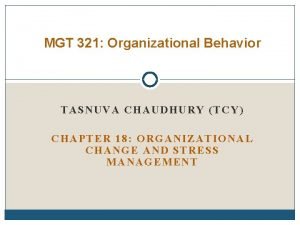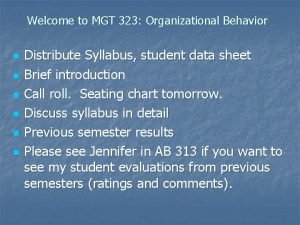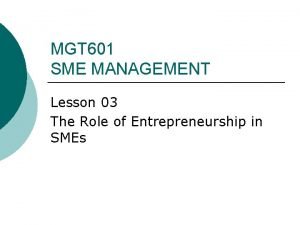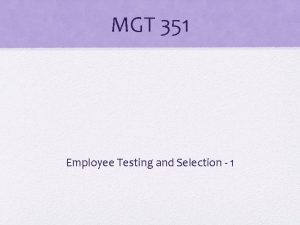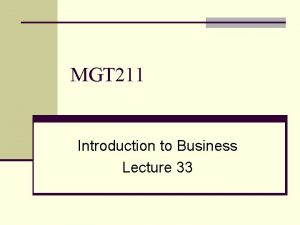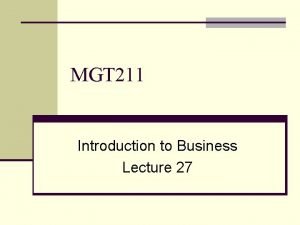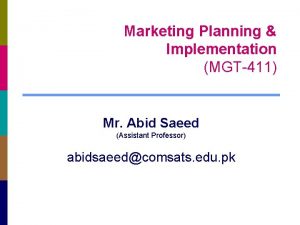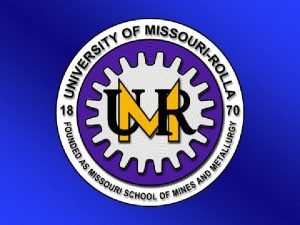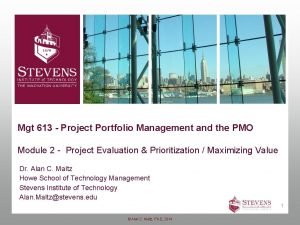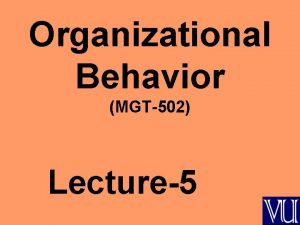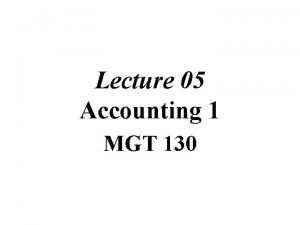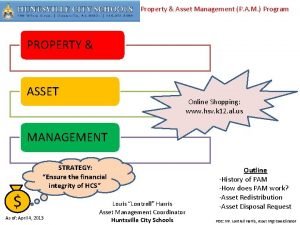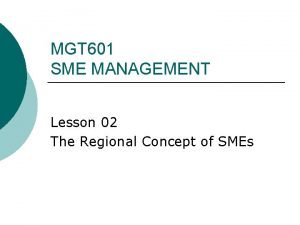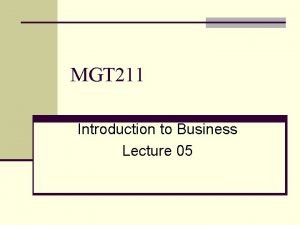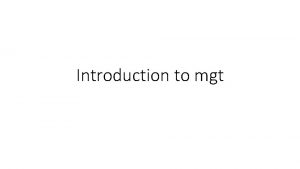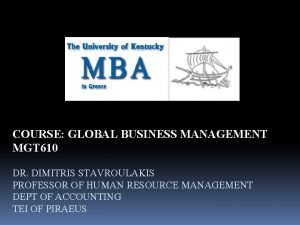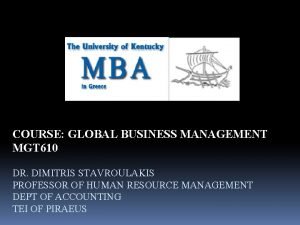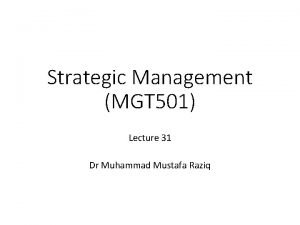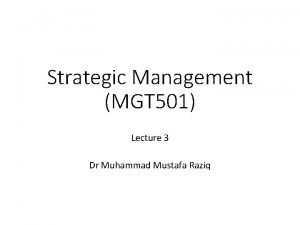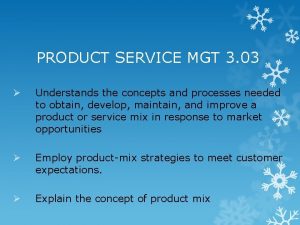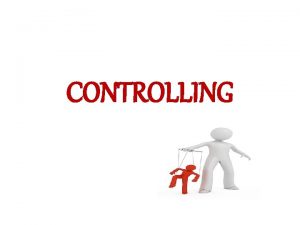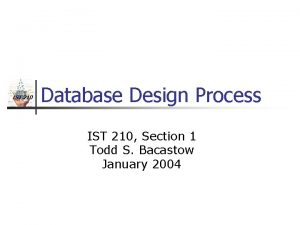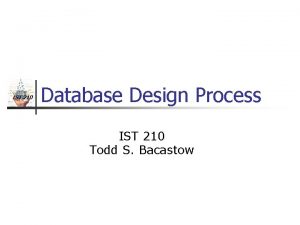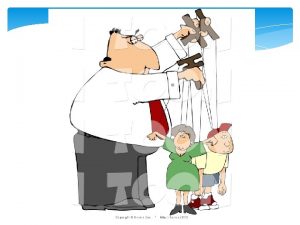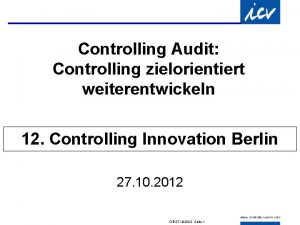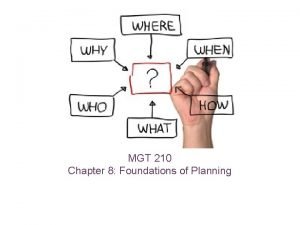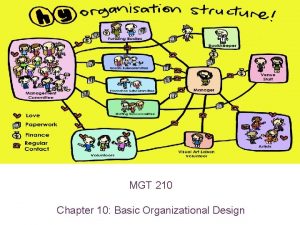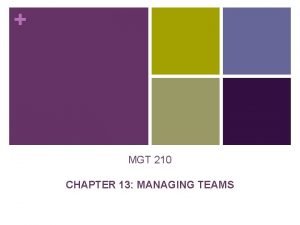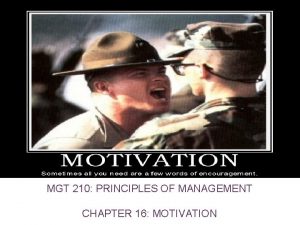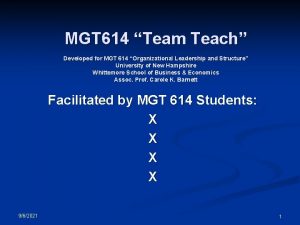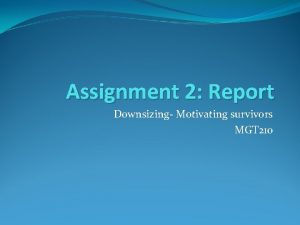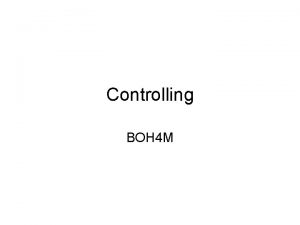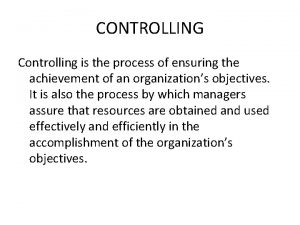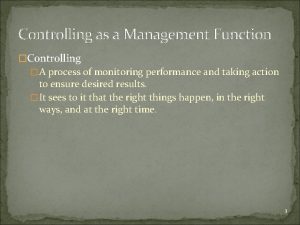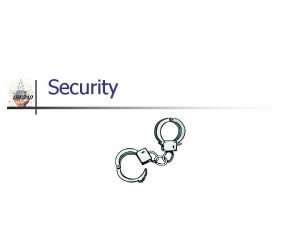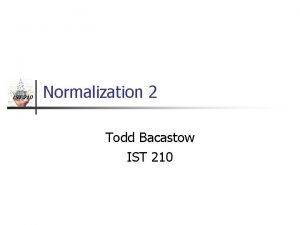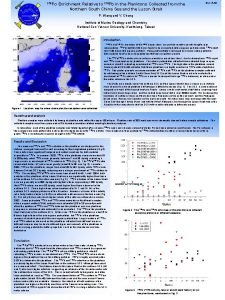MGT 210 Chapter 18 Controlling Controlling The process

























- Slides: 25

+ MGT 210 Chapter 18: Controlling

+ Controlling The process of monitoring, comparing and correcting work performance

+ Importance of Controlling Control is important because it is the only way that managers know whether organizational goals are being met and if not the reasons why The importance of control functions can be seen in three specific areas: n Planning n Empowering employees n Protecting the workplace

+ Importance of Controlling n Planning: Goals provide specific direction to employees and managers as the foundation of planning. n The effective managers follows up to ensure that what employees are supposed to do and goals are being achieved n Empowerment: An effective control system can provide information and feedback on employee performance and minimize the chance of potential problems. n Protecting the workplace: Managers must protect organizational assets in the event that any abnormalities should happen. Comprehensive controls and backup plans will help assure minimal work disruptions

+ The Control Process a three step process of measuring actual performance, comparing actual performance against standard, and taking managerial action to correct deviations or to address inadequate standards

+ The Control Process Step 1: measuring actual performance The first step in control is measuring. How we measure Four approaches used by managers are: 1. Personal observation 2. Statistical reports 3. Oral reports 4. Written reports What we measure Some control criteria can be used for any management situation. Most work activities can be expressed in quantifiable terms. Step 2: comparing actual performance against the standard n This step determines the deviation between actual performance and the standard. n Although some variation is acceptable and is expected in all activities, it is critical to determine an acceptable range of variation. n Deviation outside this range needs attention.


+ The Control Process Step 3: taking managerial action Managers can choose among three possible course of actions: n Do nothing n Correct the actual performance n Revise the standards

+ Taking Managerial Actions Correct actual performance n Depending on what the problem is, a manager could take different corrective actions: n Take immediate corrective action, which corrects problems at once to get performance back on track n Use basic corrective action, which looks at how and why performance deviated before correcting the source of deviation. Revise the standard n It’s possible the variance was because of unrealistic standard – too high or low a goal. n In this case, the standard needs the corrective action, not the performance. n If performance consistently exceeds the goal then a manager should look at whether the goal is too easy and needs to be raised. n On the other hand, managers must be cautious about revising a standard downward.

+ Controlling for Organizational Performance

+ Organizational Performance the accumulated results of all the organizational activities n All managers must know which measures will help them with the information they need about organizational performance. n Commonly used ones include: n organizational productivity n organizational effectiveness n industry rankings.

+ Measures of Organizational Performance Organizational effectiveness ü Organizational productivity ü n Productivity is the amount of G&S produced divided by the inputs needed to generate that output. Organizational effectiveness is a measure of how appropriate organizational goals are and how well those goals are being met. n Organizations and individuals want to produce the most goods and services using the least amount of inputs. n That is what guides managerial decisions in designing strategies and work activities in coordinating the work of employees. n Output is measured by the sales revenue an organization receives when goods are sold n (selling price x number sold). ü Industry & company ranking n Input is measured by the costs of acquiring and transforming resources into outputs. Rankings are popular way for managers to measure their organization’s performance.

+ Tools for Measuring Organizational Performance

Feedforward – Concurrent – + Feedback (FCF) Control Managers can implement control before an activity begins, during the time the activity is going and after the activity has been completed. 1. Feedfroward Control Taking managerial action before a problem occurs. n Helps to prevent problems before they happen 2. Concurrent Control Taking action while work activity is in progress n Direct Supervision or management by walking around 3. Feedback Control Taking action after the activity is done n Provide meaningful information about plan effectiveness n Can enhance motivation

+ Financial Controls Managers might use traditional financial measures such as ratio analysis and budget analysis n n Budgets are planning tools n A budget indicate which work activities are important n What & How much resources would be allocated Budgets are used for controlling n Provides quantitative standards to measure against

+ The Balance Scorecard Evaluate the company’s performance from four perspectives: n Financial n Customer n Internal processes n People/innovation/growth n Managers will focus on areas that drive their organization’s success and use scorecards that reflect those strategies.

+ Information Controls Managers deal with information controls in two ways: Information Used in Controlling Manager need the right information at the right time in the right amount to monitor and measure organizational activities and performance. Controlling Information Managers must have comprehensive and secure control in place to protect that information

+ Benchmarking of Best Practices Benchmarking is the search for the best practices among competitors or non-competitors that lead to their superiors performance n Benchmarking should identify the standards of excellence against which to measure and compare. n Benchmarking can be used to identify specific performance gaps and potential areas of improvement.

+ Contemporary Issues in Control

Adjusting for Cross-Cultural + Differences The differences are primarily in the measurement and corrective actions steps of the control process n Distance becomes an issue n Have to rely on formal reports n Laws & regulations n Comparability

+ Workplace Privacy n Managers monitor employee email and computer usage is that they don't want to risk being sued for creating a hostile workplace environment n Concerns about racial or sexual harassment n Managers want to ensure that company secrets are not being leaked n Employee theft n any unauthorized taking of company property by employees for their personal use

+ Workplace Violence

+ Customer Interaction There is no better area to see the link between planning and controlling than in customer service

+ Corporate Governance


